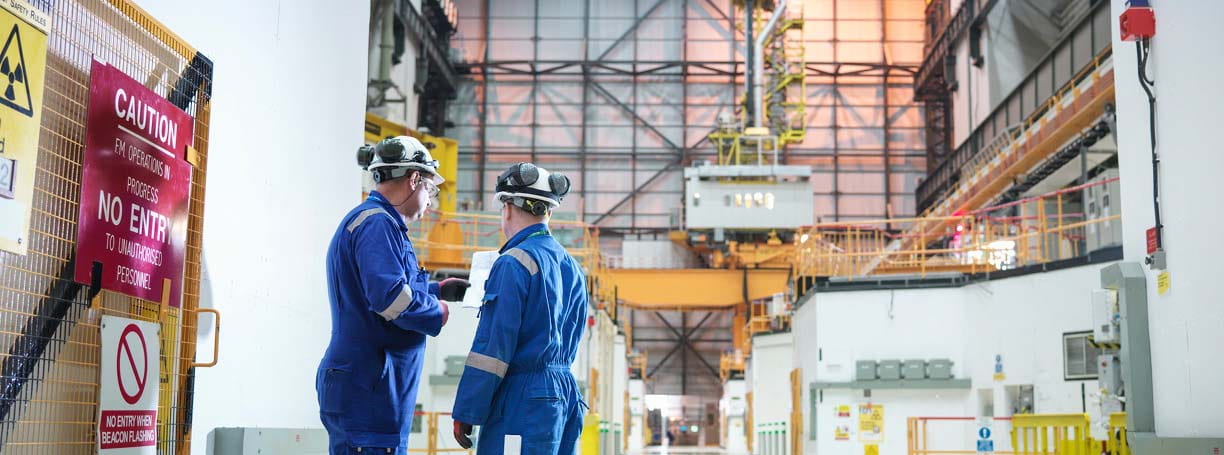
Dr. Shaheen Dewji from the George W. Woodruff School of Mechanical Engineering – Nuclear and Radiological Engineering and Medical Physics Programs at Georgia Institute of Technology was a contributing author and member of the Committee on Developing a Long-Term Strategy for Low-Dose Radiation Research in the United States to the cited study.
NOTE: Reproduced from original article available on NASEM website: https://www.nationalacademies.org/news/2022/06/u-s-needs-new-100-million-research-program-to-study-health-effects-of-exposure-to-low-doses-of-radiation-says-new-report.
News Release | June 2, 2022
Radiation exposure at low doses (below 100 milligray) or low-dose rates (less than 5 milligray per hour) occurs in a wide range of medical, industrial, military, and commercial settings. The effects of exposure at these levels are not fully understood, the report says, and there are long-standing concerns that such exposure could negatively affect human health. Although cancer has been linked to low-dose radiation exposure for decades, there is increasing evidence that it may also be associated with cardiovascular disease, neurological disorders, immune dysfunction, and cataracts.
Concerns about the health effects of low doses of radiation raise questions as to whether the public and workers are adequately protected from exposures from medical diagnostics procedures such as CT scans, legacy exposures from nuclear weapons production and nuclear waste management, and new sources of exposure such as rare earth element and lithium mining, among others. The report says research on the health effects of low-dose radiation in the U.S. is limited and fragmented, lacking leadership, central coordination, and an overarching strategic agenda. While this research was managed in the past by the U.S. Department of Energy’s Office of Science, the office’s focus has been redirected.
“There is much we don’t know about the impacts of low-dose radiation exposures on our health — but recent advances in research, new tools, and a coordinated multidisciplinary research program could help us fill those gaps,” said Joe W. Gray, professor emeritus of laboratory medicine at the University of California, San Francisco, and chair of the committee that wrote the report. “This is especially important as science seeks to provide answers to concerned individuals and to communities that have been involuntarily exposed to radiation, including Indigenous communities, atomic veterans, nuclear workers, and others impacted by the legacy of U.S. nuclear weapons testing and production.”
A Coordinated Research Program
Significant investments over a sustained period spanning more than a decade will be required in order to develop and maintain a low-dose radiation research program, with periodic reassessments based on how research is progressing. The $5 million appropriated for the DOE’s low-dose radiation program in 2021 and 2022 is not sufficient even to initiate a coordinated federal research program, the report says. With adequate funding, DOE could implement most of the research program’s essential elements identified in the report within two years.
The research agenda proposed by the report extends beyond any single agency’s capabilities at present, and would involve coordination across federal agencies and national and international partners. The committee supported leadership of this coordination by both DOE and the National Institutes of Health — with DOE leading a portion of the strategic research related to computational and modeling research, and NIH leading the epidemiological and biological research.
The report notes concerns raised by some communities about DOE’s inherent conflicts because of its work with the nuclear weapons program and its role in promoting nuclear technologies, as well as concerns from the research community about DOE’s shortcomings related to management of the previous program. NIH is widely trusted by the scientific community, has well-established and transparent processes for funding research, and has no perceived conflicts of interest. Within NIH, the National Institute of Allergy and Infectious Diseases’ Radiation and Nuclear Countermeasures Program, the National Cancer Institute, and the newly conceptualized Advanced Research Projects Agency for Health (ARPA-H) could contribute to innovative low-dose radiation research leadership.
The report also recommends elements of a research program that should be incorporated into management of the low-dose program including a long-term commitment to the research, scientific independence, and transparency and engagement with impacted communities.
Research Priorities
The report sets priorities for epidemiological and biological research on low-dose radiation, as well as for establishing a research infrastructure. A revitalized radiation research program would be able to leverage recent scientific breakthroughs — such as greater computing power, genetic research, and data sharing systems — that previous research did not.
- Epidemiological research should improve our estimation of the risks for cancer and other health outcomes, determine factors that can modify these effects — such as genetics or lifestyle — and develop better analytical tools.
- Biological research should define the dose-response relationships for low radiation exposure, linking specific doses of radiation to health effects on the cellular level and the progression of disease. This research should also identify the effects of radiation on cellular and molecular features in order to establish causal links to adverse health effects, among other priorities.
- Developing a research infrastructure should include creating tools for sensitive detection of radiation and precise characterization of cell and tissue changes, harmonizing research databases, and ensuring researchers’ access to low-dose exposure facilities.
New information gleaned by the research program can help inform estimates of the economic impact of possible changes to radiation protection standards and guidance. As there are no comprehensive estimates of the economic impact of current regulations, the committee was not able to estimate those of the proposed radiation research program.
The study — undertaken by the Committee on Developing a Long-Term Strategy for Low-Dose Radiation Research in the United States — was sponsored by the U.S. Department of Energy.

